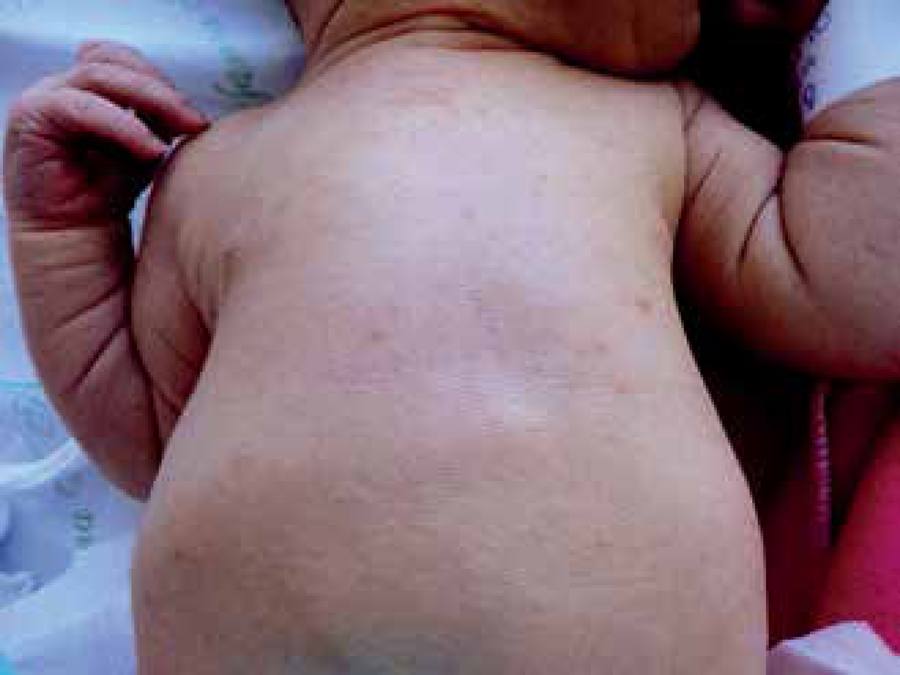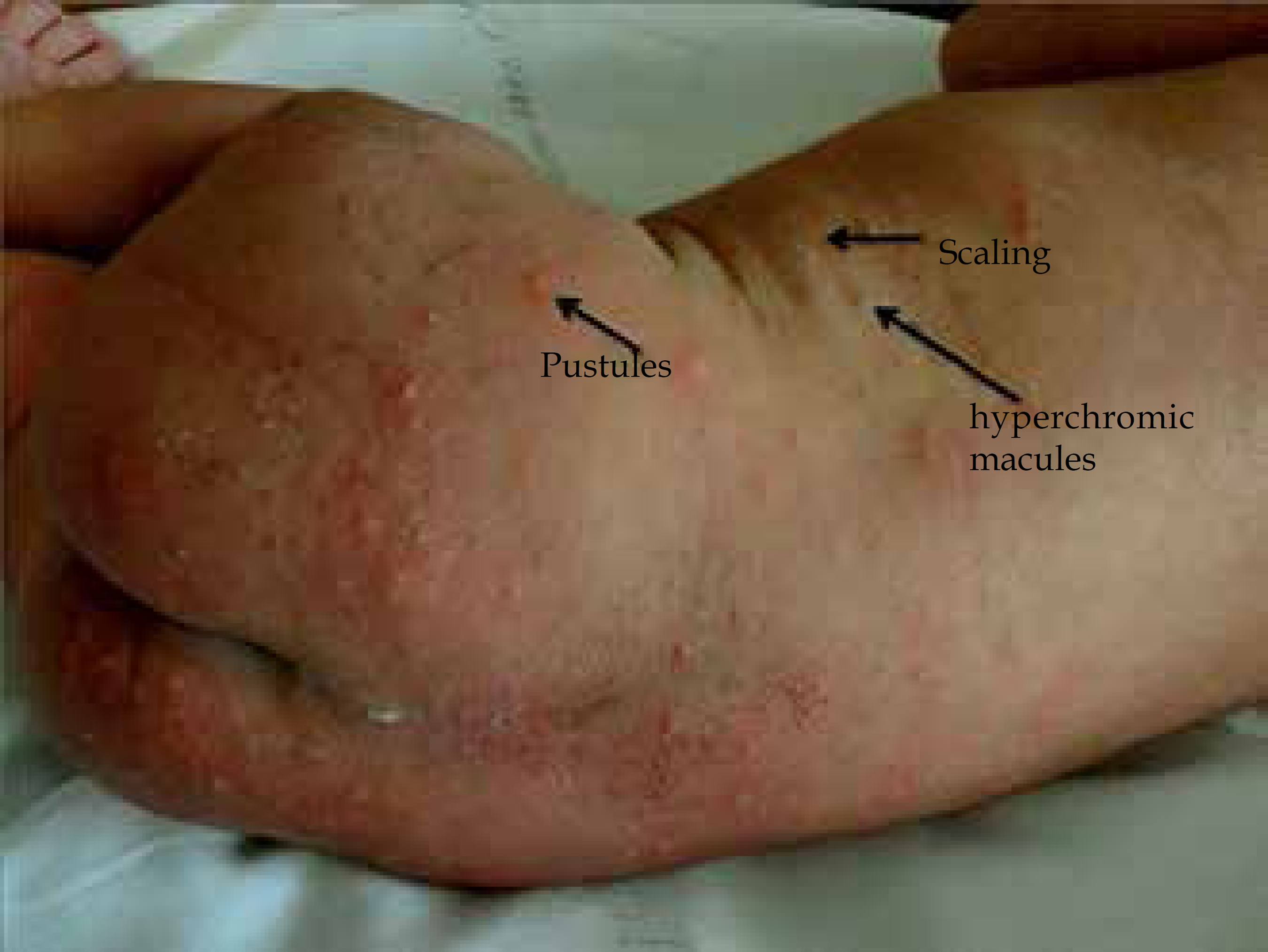Abstract:
The neonatal period comprises the first four weeks of life. It is a period of adaptation where the skin often presents several changes: transient lesions, resulting from a physiological response, others as a consequence of transient diseases and some as markers of severe disorders. The presence of pustules in the skin of the newborn is always a reason for the family and for the assisting doctor to be worried, since the newborn is especially vulnerable to bacterial, viral or fungal infection. However, the majority of neonatal skin pustules is not infectious, comprising the benign neonatal pustulosis. Benign neonatal pustuloses are a group of clinical disease characterized by pustular eruptions in which a contagious agent is not responsible for its etiology. The most common ones are erythema toxicum neonatorum, the transient neonatal pustular melanosis and the benign cephalic pustulosis. These dermatoses are usually benign, asymptomatic and self-limited. It is important that the dermatologist and the neonatologist can identify benign and transient lesions, those caused by genodermatoses, and especially differentiate between neonates with systemic involvement from those with benign skin lesions, avoiding unnecessary diagnostic tests and worries.
Keywords:
infant, newborn; Infant, newborn, diseases; Skin diseases; Neonatology; Skin abnormalities; Skin manifestations








